Semi-Fingertip Grip Bowling: How to Learn the Skill
In bowling, technique often plays a key role. Learning the semi-fingertip grip is a great way to improve your bowling skills and wow your friends on your next gaming night. Never heard of it? Worry not; this post covers everything you need to know about semi-fingertip grip bowling.
How you hold and handle the bowling ball can significantly affect your scores. For instance, changing how you hold the ball can affect its speed, spin, and accuracy, drastically improving or worsening your performance. If you do not have a great technique for holding your ball, you could have trouble controlling the ball’s spin and speed. Semi-fingertip grip bowling is a bawling technique primarily used to give the bowlers more control of the ball. Though you may be unfamiliar with it, bowlers have utilized it extensively to great effect.
Semi-fingertip bowling is a unique technique, so we've included all you need to know to get started with it and get used to it in this post.
What Is Semi-Fingertip Grip Bowling?

Semi-fingertip bowling is a technique whereby the bowler inserts the middle and ring fingers between the first and second knuckles while inserting the thumb up to the first knuckle. If you were to hold the ball like this, you would notice that it results in a loose grip. You could think that if you relax your grasp, mistakes would start to pile up. But if you can perfect the technique, a relaxed grip gives you greater control over the ball's pace and direction because your fingers aren't buried as deeply into the ball.
Benefits of Semi-Fingertip Grip Bowling
Most people love semi-fingertip bowling because it gives them more control over their release. The loose grip enables players to make minute adjustments that might be otherwise too difficult to make with a firmer grip. If you can master the technique, you will have the following:
- Increased accuracy.
- Improved Spin.
- Improved Control.
- Improved Consistency.
Disadvantages of Semi-Fingertip Grip
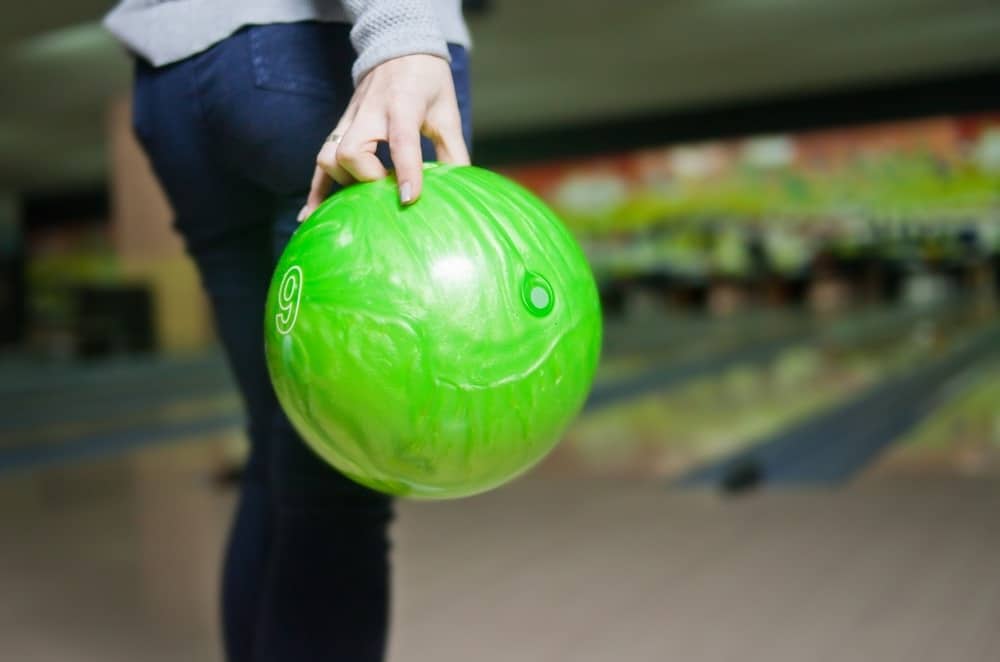
As aforementioned, semi-fingertip bowling can significantly improve your bowling performance; however, it has a steep learning curve. What follows are some of the disadvantages of semi-fingertip bowling that you should be aware of before giving it a try.
- Difficult to learn: Semi-fingertip bowling is majorly criticized for its unnatural insertion depth into the ball. The reason it isn't utilized as frequently as before is that it just doesn't fit as well as the whole fingertip or traditional drillings, which insert the fingers up to a finger joint.
- Joint pain: Due to the immense pressure on your finger joints, you could suffer hand sores and injuries. Moreover, if you play for long hours, you could suffer from joint pain due to the repetitive motion of the wrist and elbows.
- Not for everyone: There are numerous bowlers, and each has a favorite bowling style. Use a different method, such as full-fingertip drilling, if you prefer to have a firmer grip and more force when throwing the ball.
Is Semi-Fingertip Grip Bowling Good for Beginners?
If you're a novice bowler, you may be trying to decide whether to master the semi-fingertip grip or the more commonplace conventional grip, or the two-handed bowling grip. We don’t recommend semi-fingertip bowling since it's pretty unusual, and not many people use it. For bowling beginners, we recommend full-fingertip drilling, which allows you to have better control of the ball and better pin action. Full-fingertip bowling is also what most pros use, and thus you can drastically improve your bowling skills and impress your friends with the technique. While conventional drilling is suitable for novice bowlers, the whole fingertip gives seasoned pros a competitive edge.
How to Use Semi-Fingertip Grip Bowling
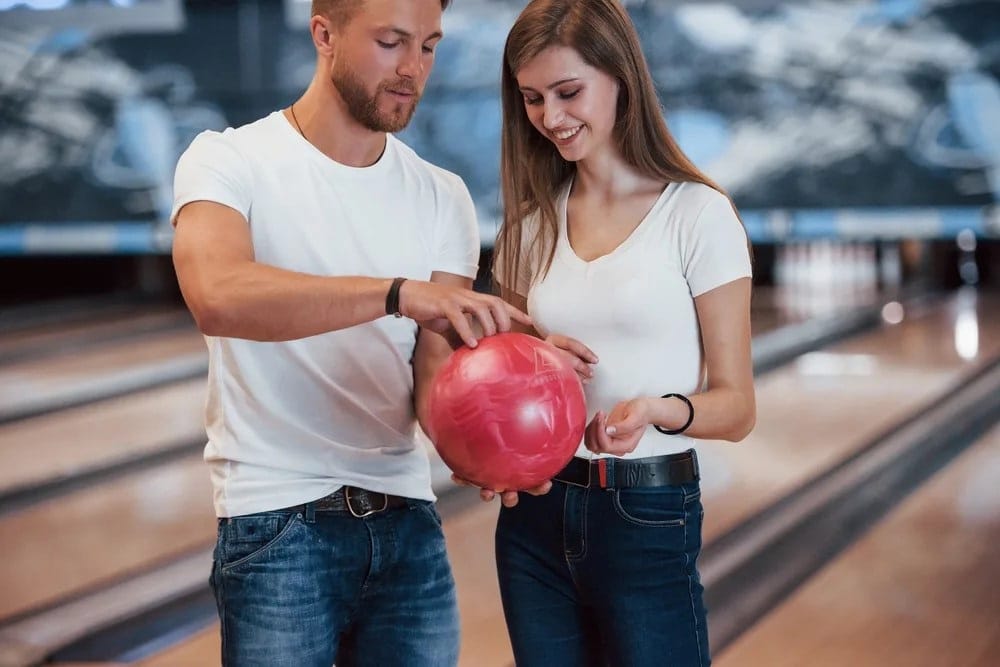
Ready to learn how to use the semi-fingertip grip bowling technique? Let’s go.
- The first thing you have to do is place your fingers right. Note that your middle and ring fingers should be inserted between the first and second knuckles. Your thumb should be inserted up to the first knuckle.
- Master the grip. When bowling with a semi-fingertip grip, a loose grip is key. A tighter grasp can seem appealing since it seems like the obvious way to go. However, it's crucial to keep from clutching the ball too tightly. The result will be painful hands if you do it. You need to find a comfortable level of pressure that prevents the ball from slipping out of your hand but doesn't cause discomfort.
- Choose the perfect ball. With semi-fingertip grip bowling, a light ball is the best bowling ball option. Due to the loose grip, you shouldn’t use a heavy ball as it would be too difficult to throw and control.
- When bowling with a semi-fingertip grip, your grasp is not as tight as it would be with a full fingertip hold. If you want to throw far, you can't use your fingers to propel you; you'll need to rely on your shoulders. Therefore, your shoulder and arm will need to be the source of your power. You could seriously injure yourself if you use your fingers to increase your throwing force.
- Always practice. To become proficient at semi-fingertip bowling, regular practice is essential. Use the method every time you head out for a new game, and you'll find it much simpler to learn and implement into muscle memory.
What Other Bowling Grips Can You Learn?
Semi-finger grip bowling is not the only bowling technique you can learn. If you want to explore other bowling techniques, you could try the following gripping techniques.
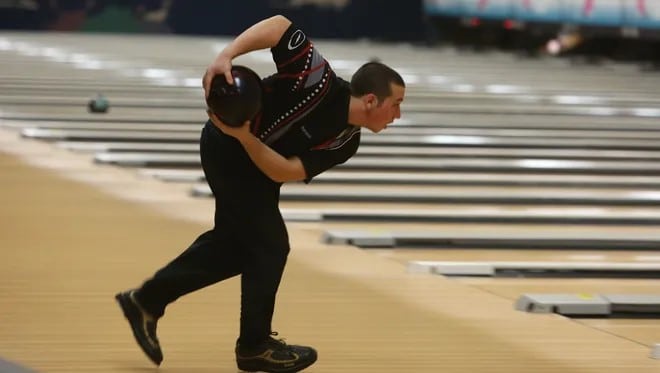
1. Two-handed bawling grip: Bowling with two hands, as in the two-handed bowling grip, is an excellent option for anyone who needs more force in their release or who has trouble using just one hand. Although it may look strange, several bowlers swear by this grip.
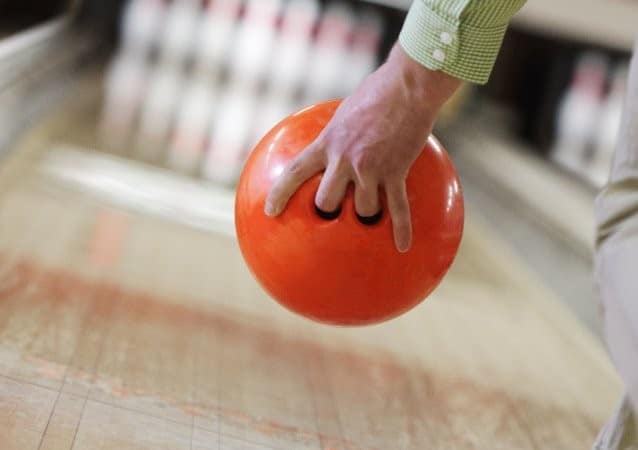
2. The conventional grip: Today's bowlers almost universally employ this grip. For those just starting, it's hard to beat because of how intuitive and accessible it is. To use it, your thumb must go all the way in, and your middle and ring fingers must go as far as the second knuckle.
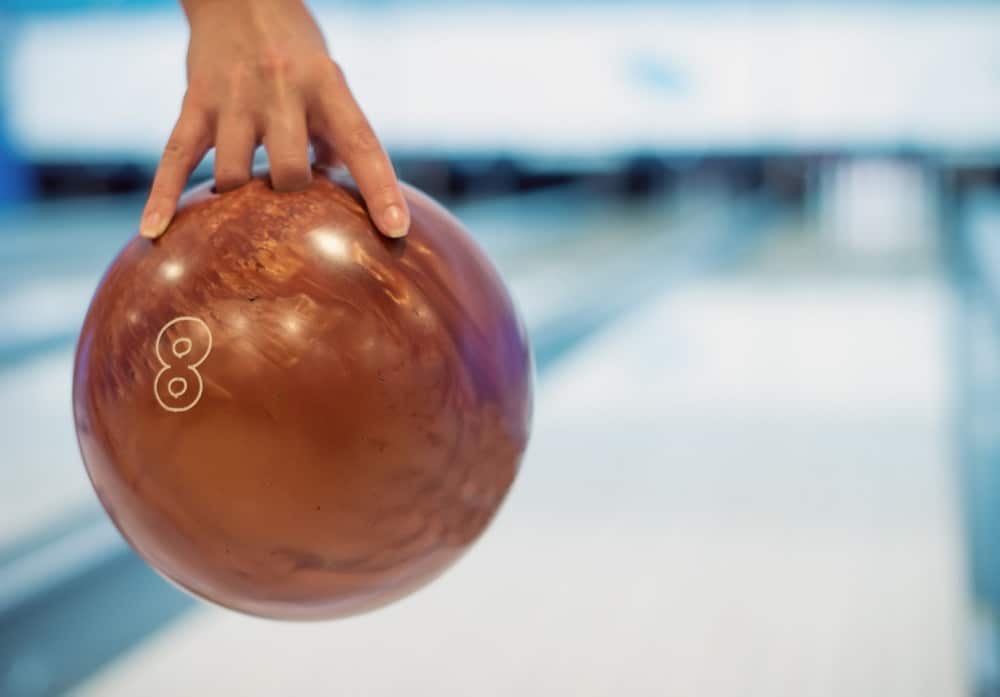
3. The fingertip grip: The fingertip bowling grip differs from the semi-fingertip grip in that the third and fourth fingers are inserted up to the first knuckle, and the thumb is inserted up to the first knuckle. This grip is more relaxed than the semi-fingertip one.
Measuring your hand bowling fingertip grip
If you don’t want to deal with soreness after bowling gameplay, consider playing with a custom-fit ball. All you need to do is visit a bowling pro shop and then they’ll measure your fingertip grip size using a specialized bowling ball. Here are the steps:
Step 1: Once at the bowling pro shop, the measuring process is by you placing your hand on the specialized bowling ball. For the perfect thumb size, ensure the girth and length of your thumb easily releases from the thumb hole with little to no friction.
Step 2: With the thumb fitted in place, now extend the ring and middle fingers into their holes. Ensure the two holes are both centered under the fold of the last finger knuckle.
Step 3: For the perfect fingertip grip size, the ring and middle fingers should fit inside their holes easily with little to no friction.
Semi-Fingertip Vs Full Fingertip Grip
Before we delve into the differences between the two, it’s important to note that both are techniques for drilling bowling balls. That said, let's proceed as follows:
- In the case of the full fingertip grip drilling technique, the ring finger and the middle finger are both inserted into the first joint of each finger. With semi fingertip bowling ball drilling method, the ring and middle fingers are inserted into the ball till its is midway between the first and the second finger joint.
Conclusion
Bowling pros looking to add some variety to their game can benefit significantly from the semi-fingertip grip. Semi-fingertip bowling is more difficult for beginners to pick up and master, but it allows for more precise manipulation of the ball's spin, speed, and trajectory. For novice bowlers, we advise sticking with the conventional grip or trying out full-fingertip bowling.
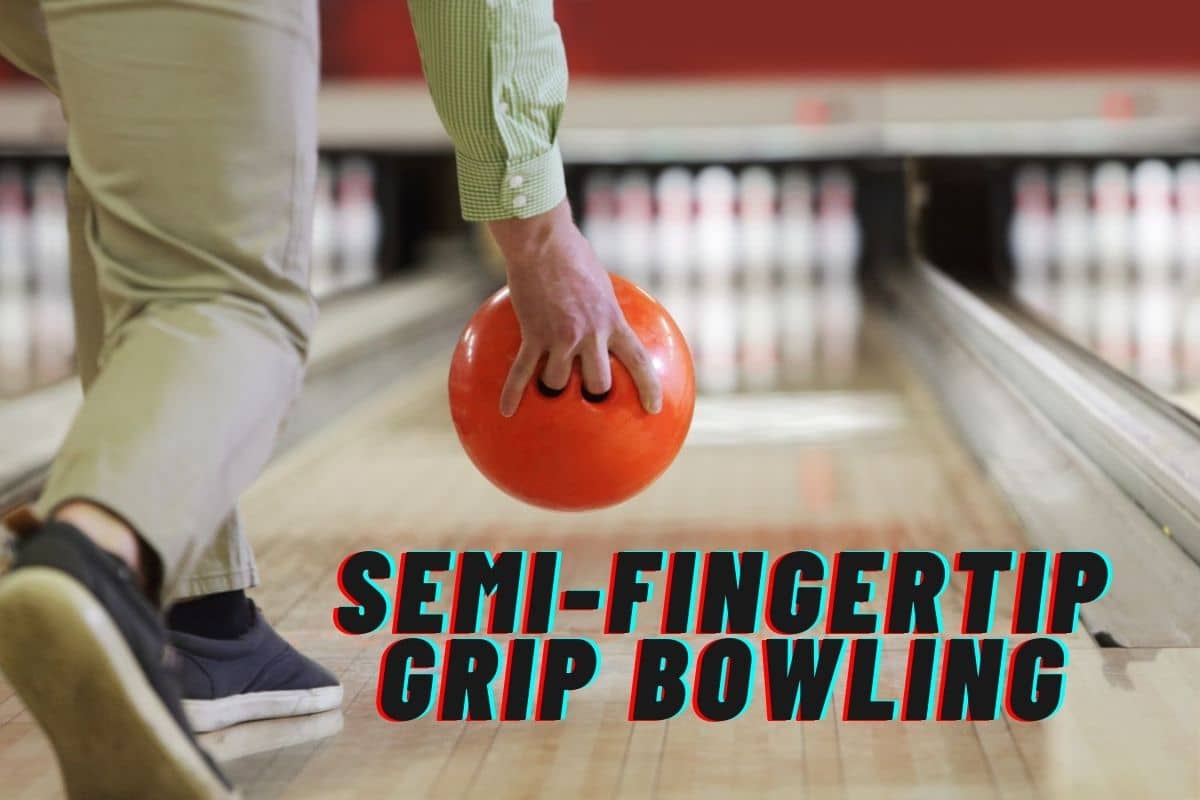
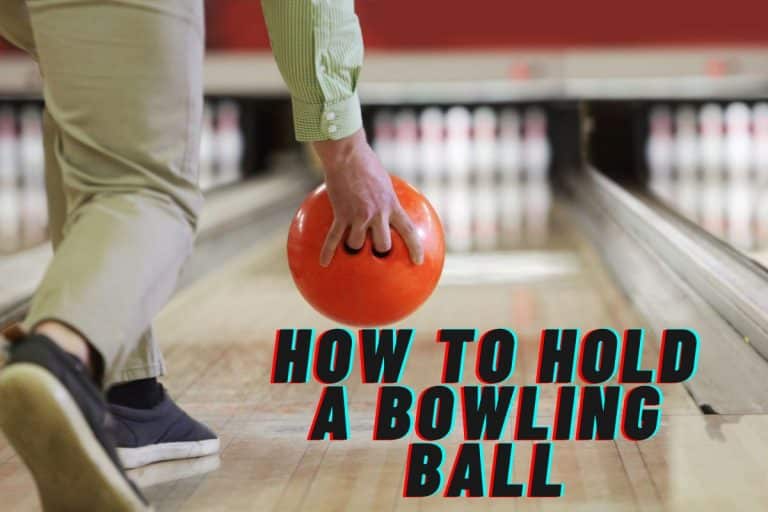
![How to Build a Bowling Lane in Your Basement [Installation, and Maintaining]](https://www.bowlingknowledge.com/wp-content/uploads/2023/01/Build-A-Bowling-Lane-In-Your-Basement-At-Home-768x512.jpg)
![Can you Bowl while pregnant? [Is It Safe?]](https://www.bowlingknowledge.com/wp-content/uploads/2023/01/Can-you-Bowl-while-pregnant-768x512.jpg)
![The Highest Score In Bowling Without A Strike [190 Points]](https://www.bowlingknowledge.com/wp-content/uploads/2023/02/Highest-Score-In-Bowling-Without-A-Strike-768x512.jpg)
![How Much Is Bowling At Main Event [Cost Detail]](https://www.bowlingknowledge.com/wp-content/uploads/2023/01/How-Much-Is-Bowling-At-Main-Event-768x512.jpg)
![Bowling Oil Patterns [Different Types Explained]](https://www.bowlingknowledge.com/wp-content/uploads/2023/02/Bowling-Oil-Patterns-Explained-768x512.jpg)